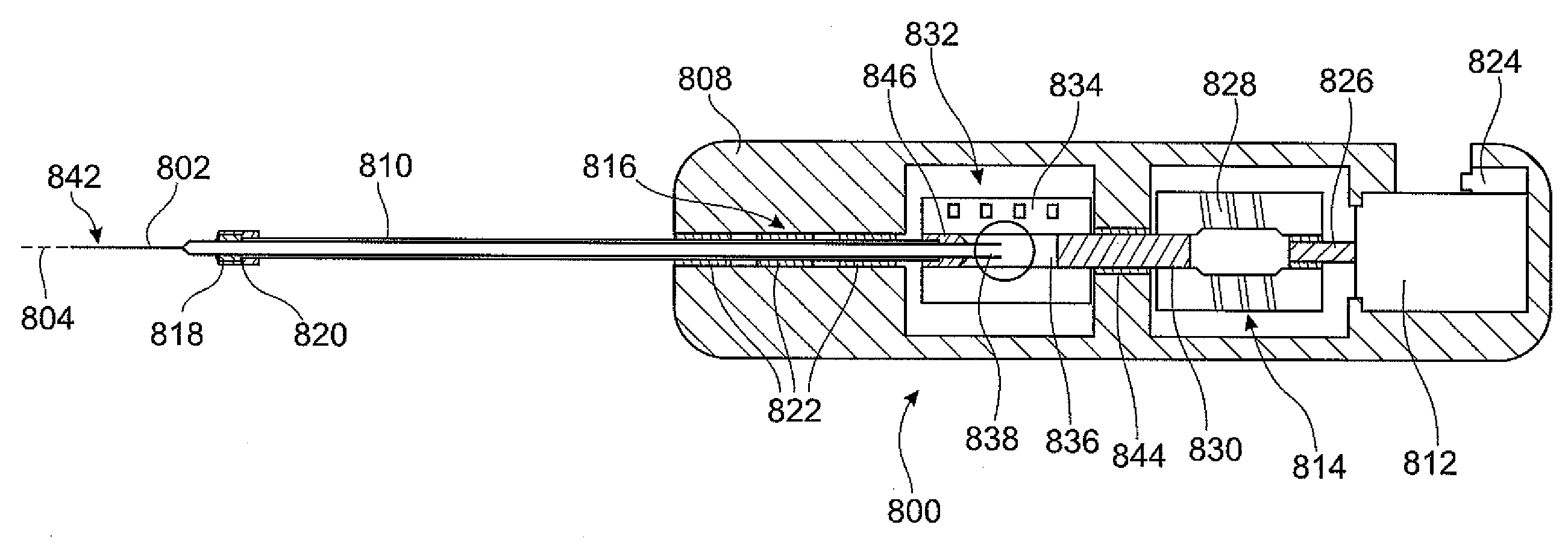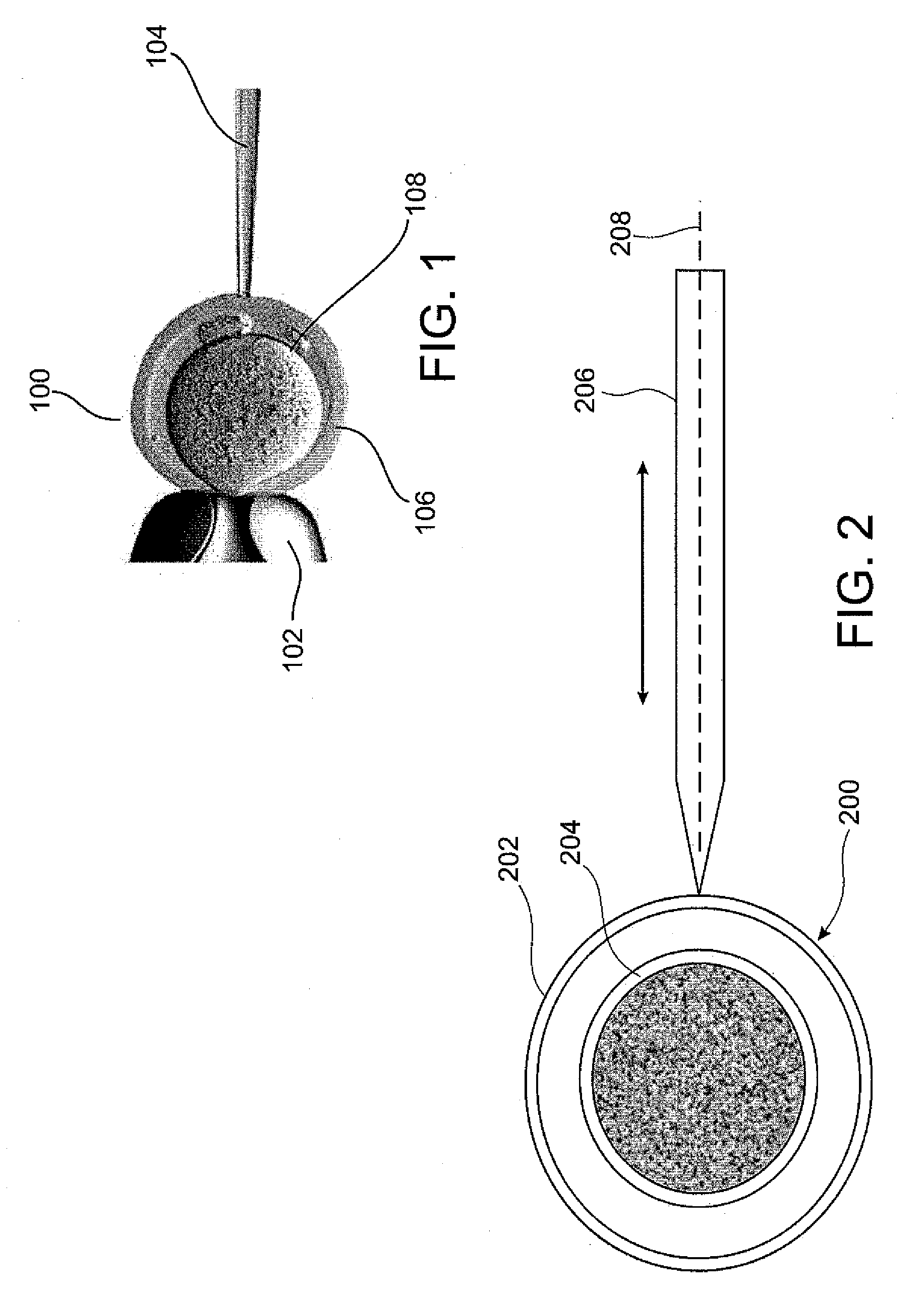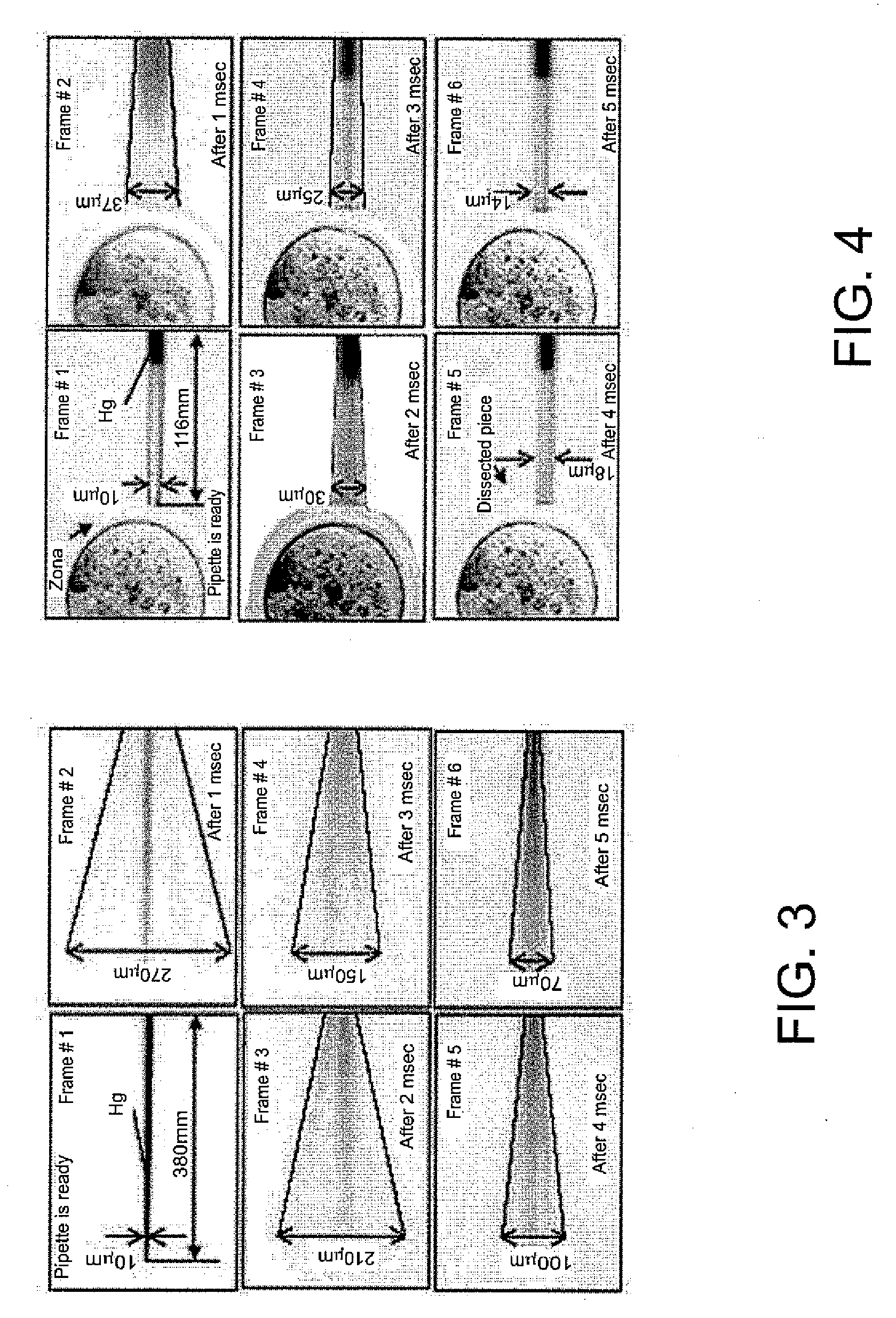Rotationally Oscillating Injector
a rotating oscillating injector and rotating technology, applied in the field of devices, systems and methods for injection, can solve the problems of inability to perform convention icsi successfully in the mouse, inhibit cell viability, and the difficulty of convention icsi in most species, and achieve the effect of facilitating the injection of material therein
- Summary
- Abstract
- Description
- Claims
- Application Information
AI Technical Summary
Benefits of technology
Problems solved by technology
Method used
Image
Examples
example 1
Penetration of Bovine Oocyte
[0077]FIGS. 15, 16, 17 and 18 highlight four stages of an injection process using an injection apparatus as described herein. In this procedure, a glass micropipette was used with a micromotor that alternately rotated 1 degree clockwise and counterclockwise, with a frequency of 100 Hz. The rotational resolution of the micromotor was 0.17 degrees.
[0078]FIG. 15 shows the prepenetration stage. A holding pipette 1500 holds a bovine oocyte 1502 in position while an injection pipette 1504 is positioned at the surface of the oocyte outer membrane.
[0079]The penetration stage is shown in FIG. 16, where the injection pipette 1504 oscillates relative to the oocyte 1502 in order to form a hole in the oocyte 1502 (e.g., via a drilling action). FIG. 17 shows the penetrated stage where the injection pipette 1504 has fully penetrated the oocyte 1502. This is the stage where the material held in the injection pipette 1504 for injection is expelled into the oocyte 1502. Fi...
example 2
Penetration of Mouse Oocytes
[0080]A prototype was built in accordance with the example of the system 1000 shown and described herein with respect to FIGS. 10-13 and was used for performing ICSI on mouse oocytes of hybrid BDF1 strain at the Center for Regenerative Biology and the Department of Animal Science, University of Connecticut. The operational parameters of the system 1000, also referred to herein as Ros-drill©, were set at A=0.6°, f=100 Hz, T0=0.5 seconds, and T1=1 second for these preliminary biological experiments.
[0081]Before the ICSI tests, several different pipette styles were tried out, with the consideration being that the geometry of the injection element 1002 being capable of playing a crucial role in the exercise. Three different pipette varieties were compared while their internal and external diameters were kept fixed (5 μm and 7 μm, respectively).
[0082]A first pipette variety tried was that of Piezo-ICSI flat tip pipettes. Piercing was unsuccessful with this pip...
example 3
Penetration of Mouse Oocytes
[0094]In this section and with the underlying study, the present applicants further describe the development and testing of a rotationally oscillating drill device and further develop a mouse ICSI technology without using toxic mercury. Using this new technology, the applicants obtained survival, fertilization, and blastocyst formation rates at least comparable to that of piezo-assisted ICSI.
[0095]The present applicants found it relatively easy to penetrate the mouse zona using a spiked micropipette. At least one aim of the present design was to build a drill that could rotationally isolate a pipette at a desired frequency and an angular amplitude to achieve two tasks: i) to enable separation of the sperm head and tail, and ii) to facilitate penetration of the oolemma. Because a perfectly straight pipette is impossible to be pulled even using a fully automatic puller, an eccentricity is expected. This feature substantially unavoidably causes some degree o...
PUM
| Property | Measurement | Unit |
|---|---|---|
| inner diameter | aaaaa | aaaaa |
| inner diameter | aaaaa | aaaaa |
| inner diameter | aaaaa | aaaaa |
Abstract
Description
Claims
Application Information
 Login to View More
Login to View More - R&D
- Intellectual Property
- Life Sciences
- Materials
- Tech Scout
- Unparalleled Data Quality
- Higher Quality Content
- 60% Fewer Hallucinations
Browse by: Latest US Patents, China's latest patents, Technical Efficacy Thesaurus, Application Domain, Technology Topic, Popular Technical Reports.
© 2025 PatSnap. All rights reserved.Legal|Privacy policy|Modern Slavery Act Transparency Statement|Sitemap|About US| Contact US: help@patsnap.com



